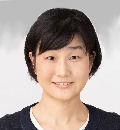Yoga in Japan
Yoga in Japan is a huge multi-billion dollar industry with a primary market aimed towards ladies in their 30s and 40s.There are many franchise stores, and individual studios all over the cities – many in prime locations to catch business people coming home from work.
In this blog by Japanese teacher Midori Miyake, she looks at the benefits of this pose and teaches some useful vocabulary connected with your body.
Read the blog in Japanese below and learn new Kanji too. Also, listen to the YouTube video to practice your Japanese listening.
開脚前屈
Wide-Angle Seated-Forward Bend Yoga Pose

By MIYAKE Midori
みなさん、開脚前屈ができますか? ある生徒様に聞いた話ですが、なんと80歳の女性が、「腰痛改善!開脚ストレッチ」という本を見ながら、1カ月間、毎日15分間練習したら、180度の開脚前屈が出来るようになったそうです。すごいですね!
ここでポイントとなるのは、ヨガの4つのポーズを毎日欠かさず行ったことです。ご存知の方も多いかもしれませんが、ただ単に開脚前屈のポーズばかりを練習していても出来るようにはなりません。股関節だけではなく、腰や背中など、股関節以外の筋肉も柔軟にする必要があります。
とはいえ、もともとの骨格によっては、どれだけ練習しても出来るようにならない方もいます。その場合は、ブランケットを折ってお尻の下に敷いて高さを調整すると無理なく行うことが出来ます。
開脚前屈の効果は、骨盤の歪みの改善、足のむくみの解消、生理不順の予防・緩和、冷え性の緩和、リラックス、リンパの流れを改善しデトックスするなど、良いことがたくさんあります。簡単なポーズに見えますが、とても奥が深いです。
膝や腰が痛い時は、効果を得るどころか体を痛めてしまうのでやめましょう。180度脚が開かなくても、前に体が倒せなくても大丈夫です。正しい方法で、無理なく、毎日継続が大切です。
To listen to this blog, please watch our Youtube video.
開脚前屈(かいきゃく ぜんくつ)
みなさん、開脚前屈(かいきゃく ぜんくつ)ができますか? ある生徒様(せいとさま)に聞(き)いた話(はなし)ですが、なんと80歳(さい)の女性(じょせい)が、「腰痛(ようつう)改善(かいぜん)!開脚(かいきゃく)ストレッチ」という本(ほん)を見(み)ながら、1カ月間(かげつかん)、毎日(まいにち)15分間(ふんかん)練習(れんしゅう)したら、180度(ど)の開脚(かいきゃく)前屈(ぜんくつ)が出来(でき)るようになったそうです。すごいですね!
ここでポイントとなるのは、ヨガの4つのポーズを毎日(まいにち)欠(か)かさず行(おこな)ったことです。ご存知(ぞんじ)の方(かた)も多(おお)いかもしれませんが、ただ単(たん)に開脚(かいきゃく)前屈(ぜんくつ)のポーズばかりを練習(れんしゅう)していても出来(でき)るようにはなりません。股関節(こかんせつ)だけではなく、腰(こし)や背中(せなか)など、股関節(こかんせつ)以外(いがい)の筋肉(きんにく)も柔軟(じゅうなん)にする必要(ひつよう)があります。
とはいえ、もともとの骨格(こっかく)によっては、どれだけ練習(れんしゅう)しても出来(でき)るようにならない方(かた)もいます。その場合(ばあい)は、ブランケットを折(お)ってお尻(しり)の下(した)に敷(し)いて高(たか)さを調整(ちょうせい)すると無理(むり)なく行(おこな)うことが出来(でき)ます。
開脚前屈(かいきゃくぜんくつ)の効果(こうか)は、骨盤(こつばん)の歪(ゆが)みの改善(かいぜん)、足(あし)のむくみの解消(かいしょう)、生理不順(せいりふじゅん)の予防(よぼう)・緩和(かんわ)、冷え性(ひえしょう)の緩和(かんわ)、リラックス、リンパの流(なが)れを改善(かいぜん)しデトックスするなど、良(よ)いことがたくさんあります。 簡単(かんたん)なポーズに見(み)えますが、とても奥(おく)が深(ふか)いです。
膝(ひざ)や腰(こし)が痛(いた)い時(とき)は、効果(こうか)を得(え)るどころか体(からだ)を痛(いた)めてしまうのでやめましょう。180度(ど)脚(あし)が開(ひら)かなくても、前(まえ)に体(からだ)が倒(たお)せなくても大丈夫(だいじょうぶ)です。正(ただ)しい方法(ほうほう)で、無理(むり)なく、毎日(まいにち)継続(けいぞく)が大切(たいせつ)です。
Wide-Angle Seated-Forward Bend Yoga Pose
Can you do the Wide-Angle Seated-Forward Bend or Upavistha Konasana yoga pose? According to one student's story, I heard that an 80-year-old lady was able to it by reading a book entitled “Resolve your back pain! Doing the Wide-Angle Seated-Forward Bend” and doing the exercises every day for 15 minutes for a month she was able to do the 180-degree splits Seated-Forward Bend. That's amazing, isn't it?
The main point is to do these 4 Yoga poses every day without fail. I think a lot of people know this, but you cannot get to do the Wide-Angle Seated-Forward Bend just by practicing that pose. Its not just the hip joint but also lower back and back, you have to make muscles flexible too not just your hip joint.
But having said this, there are some people who due to their skeletal structure will never be able to do this pose no matter how much they practice. In these case, if you fold a blanket up and place it under your bottom and by adjusting the height you get to do it without much trouble.
There are so many benefits to doing the Wide-Angle Seated-Forward Bend for example it improves pelvic distortion, eliminates swelling in the legs, eases and prevents menstrual irregularities, eases coldness, improves relaxation and acts as a detox. It may look like a simple pose, but it is actually quite a deep exercise.
If your knees or lower back start to hurt then please do not continue, it is not effective and could be causing damage to your body. You don't have to do the 180 pose, or lean your body flat forward. The correct method is to continue with the exercises every day comfortably.
開脚前屈(かいきゃくぜんくつ) wide angle seated forward bend
腰痛(ようつう) lower back (or hip) pain
改善(かいぜん) improvement
ストレッチ stretch
欠(か)かさず without fail
ご存知(ぞんじ) knowing
股関節(こかんせつ) hip joint
腰(こし) lower back
背中(せなか) back
筋肉(きんにく) muscle
柔軟(じゅうなん) flexible
骨格(こっかく) skeletal structure
お尻(しり) bottom
調整(ちょうせい) adjustment
無理(むり)なく without hardship
効果(こうか) effect
歪(ゆが)み distortion
むくみ swelling
解消(かいしょう) reduction
生理不順(せいりふじゅん) menstrual irregularity
予防(よぼう) prevention
緩和(かんわ) softening
冷え性(ひえしょう) sensitivity to cold

Konnichiwa! My name is Midori Miyake. After I graduated from university, I worked for a long time in a Japanese company, but a little while after getting married, I quit my job. After that, I studied and became a Japanese language teacher. I normally do yoga for my health. I think it's important to continue little by little everyday.
When learning Japanese, there are some times when it is fun and there are probably times when it is really difficult. But by continuing little by little you can improve your Japanese language ability and then if you can find some pleasure in using your Japanese in the classes I will be so glad. With language learning, speaking a lot is the path to improving. Don't be afraid to make mistakes, let's just speak a lot of Japanese! I am looking forward to speaking Japanese with you all.
